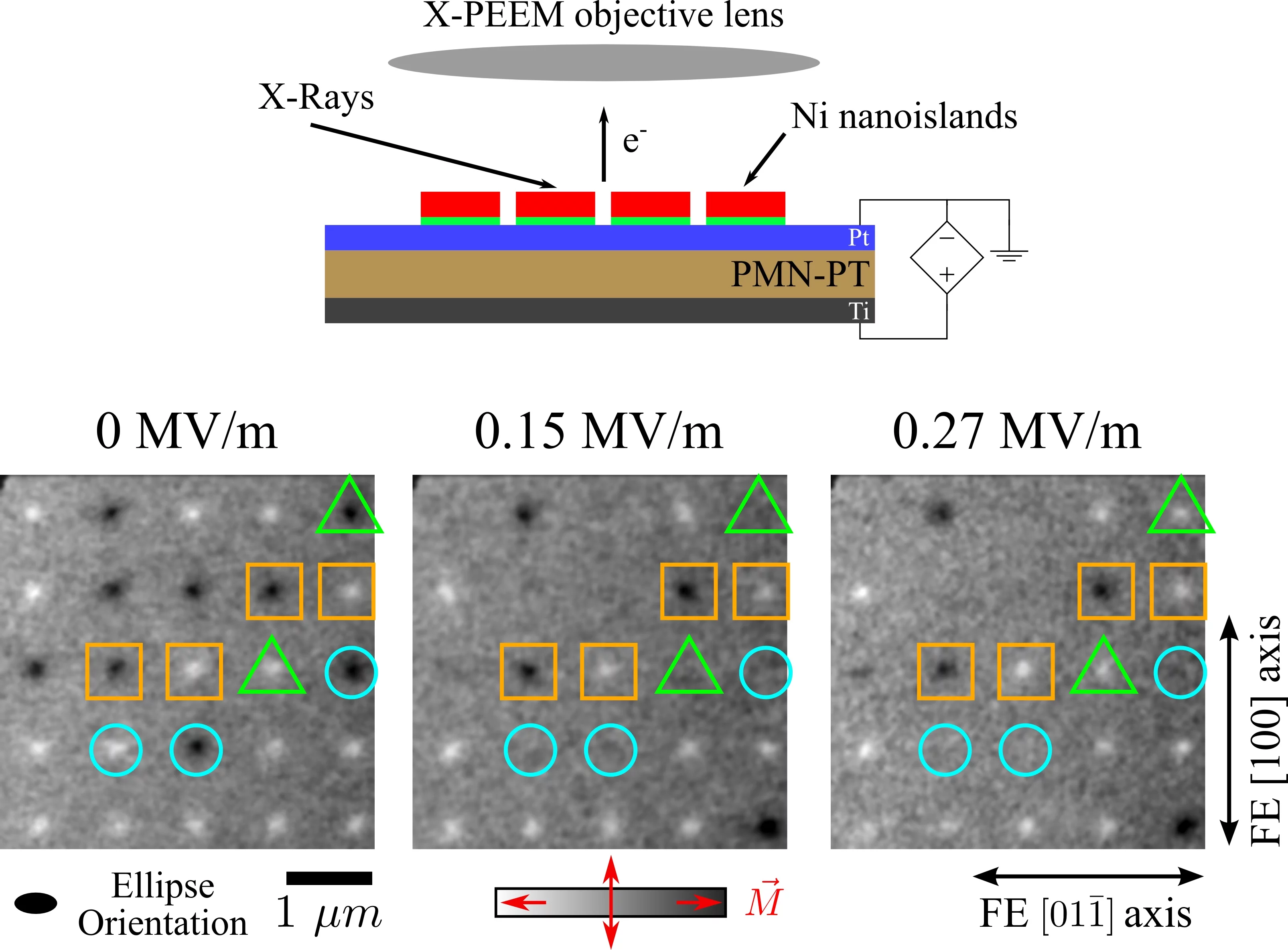Encoding information by the application of an electric field has a key role in the development of novel memory devices that can operate at high speed while keeping low energy consumption. In magnetoelectric multiferroics, magnetic and ferroelectric ordering coexist and are coupled together so that it is possible to manipulate the material's magnetic structure by applying an electric field with a negligible current flow. These materials however are rare, and up to now showed ordering temperatures well below room temperature which prevent their future implementation in real world devices. To overcome this problem, it is possible to artificially couple a ferromagnetic and ferromagnetic material to create an artificial multiferroic. A team of researchers at the Swiss Light Source (PSI), Laboratory for Micro and Nanotechnology (PSI) and University of California (UCLA) has investigated the possibility of achieving giant magnetoelectric coupling in strain-coupled artificial multiferroic nanostructures. Ferromagnetic nanoislands made out of nickel were grown on a piezoelectric ferroelectric crystal (PMN-PT) and their magnetic configuration was imaged with X-rays Photoemission Electron Microscopy (X-PEEM). Their findings demonstrate for the first time that is possible, by applying an in-situ electric field, to induce a uniform 90° reorientation of the magnetization in an array of single domain nanoislands from the shape anisotropy induced easy axis to its in-plane orthogonal direction. The observed phenomenon constitutes an important step towards the realization of magnetoelectric magnetic random access memory cells showing giant magnetoelectric coupling, low power consumption and high switching reliability.
Read the full story
Read the full story
Reference
Single Domain Spin Manipulation by Electric Fields in Strain Coupled Artificial Multiferroic NanostructuresM. Buzzi, R. V. Chopdekar, J. L. Hockel, A. Bur, T. Wu, N. Pilet, P. Warnicke, G. P. Carman, L. J. Heyderman, and F. Nolting
Physical Review Letter, Volume: 111, Page: 027204 (2013) DOI:10.1103/PhysRevLett.111.027204
Contact
Michele Buzzi, Swiss Light SourcePaul Scherrer Institute, 5232 Villigen PSI, Switzerland
Phone: +41 56 310 3562, e-mail: michele.buzzi@psi.ch
Prof. Dr. Frithjof Nolting, Swiss Light Source
Paul Scherrer Institut, 5232 Villigen PSI, Switzerland
Phone: +41 56 310 5111, e-mail: frithjof.nolting@psi.ch
